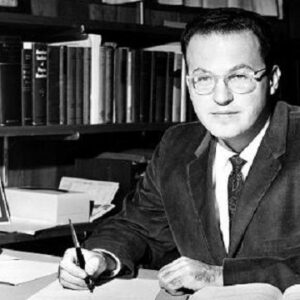Donald Arthur Glaser was a well-known physicist and neurobiologist in the United States. He began his career as a physicist, concentrating on elementary particle research. However, he changed fields of study frequently throughout his career, eventually focusing on molecular biology and neuroscience. He had the opportunity to work at famous universities such as the University of Michigan and the University of California at Berkeley as part of his career. Along with teaching, he was permitted to work as a full-time researcher at this institution. He was also a founding member of one of the earliest biotechnology businesses that pioneered the development of cancer medications through the use of revolutionary technologies. Donald A Glaser won the 1960 Nobel Prize in Physics for inventing the ‘Bubble Chamber.’
Childhood & Adolescence
Donald A. Glaser was born in Cleveland, Ohio, on 21 September 1926 to businessmen William J Glaser and his wife, Lena.
After attending several public institutions in Cleveland, he earned a bachelor’s degree in physics and mathematics from the Case School of Applied Science in 1946.
His interest in particle physics grew throughout his time at the Case School of Applied Sciences. He spent a few months following graduation working as a teacher at the Case School of Applied Science.
He earned a Ph.D. in physics from the prestigious California Institute of Technology in 1949. He earned his Ph.D. in Mathematics the following year.
He worked on cloud chambers and cosmic rays with renowned physicist Carl David Anderson while completing his Ph.D. in Physics. ‘The Momentum Distribution of Charged Cosmic Ray Particles Near Sea Level’ was the title of his doctoral dissertation.
Donald Glaser’s Career
In 1949, shortly after earning his Ph. D. in physics, he accepted a position at the University of Michigan that included both teaching and research opportunities. He was advanced to the position of professor a few years later, in 1957.
He spent a lot of time investigating elementary particles while he was teaching at the University of Michigan. He integrated a variety of experimental techniques with his understanding of diffusion cloud chambers. These investigations formed the groundwork for his 1952 invention of the ‘Bubble chamber.’
The ‘Bubble chamber’ was invented as a tank filled with superheated clear liquid that enables the detection of electrically charged particles. He conducted his experiments using ether; but, in subsequent attempts, he confirmed that hydrogen could also be utilized in the bubble chamber.
This development was an important scientific breakthrough, as it enabled scientists to monitor the intense beams produced by an accelerator.
His other research activities included the study of elementary particles at the Brookhaven National Laboratory’s Cosmotron and the Lawrence Radiation Laboratory’s Bevatron. These investigations shed light on the life span, decay mechanisms, and spin of subatomic particles such as the L° hyperon, K° meson, and S° hyperon.
In 1959, he relocated to Berkeley and began working at the University of California as a professor of physics. He rekindled his interest in molecular biology at this time period. He also attended lectures on biology while working as a visiting professor at the Massachusetts Institute of Technology. He also spent a few months in Copenhagen studying molecular biology under the tutelage of eminent molecular biologist Ole Maaloe.
Donald A. Glaser’s research focused on cancer cells, namely skin cancer. He worked at the University of California, Berkeley’s Virus Lab, where he conducted research on bacteria, mammalian cells, and bacteriophages.
He co-founded the Berkeley Scientific Laboratory with Bill Wattenberg in 1968. Although the primary objective was to automate diagnostic procedures, the link was fleeting.
He founded the Cetus Corp. in 1971, a biotechnology business focused on the development of interleukin-2 and interferon for cancer therapy. Cetus Corporation was bought by Chiron Corporation in 1991, and Chiron Corporation was eventually acquired by Novartis.
With the growing reliance on two fields of research, namely biochemistry, and molecular physics, Donald A Glaser pondered changing his field of study once more. He was fascinated by neurobiology; he desired to comprehend human eyesight and the brain processes that underpin it. He was known to have built a computational model of the human visual system for this aim.
His Significant Works
Donald A Glaser was a well-known scientist. He is best renowned for inventing the ‘Bubble chamber,’ which aided in the discovery and establishment of numerous physics theories and phenomena.
Awards and Accomplishments
In 1953, he received the University of Michigan’s Henry Russell Award.
In 1958, he was awarded the Physical Society’s Charles Vernon Boys Prize.
Hughes Aircraft Company presented him with the American Physical Society Prize in 1959. He obtained an honorary Doctor of Science degree from the Case Institute of Technology the following year.
Donald A. Glaser was awarded the 1960 Nobel Prize in Physics “for inventing the bubble chamber.”
Personal History and Legacies
He married Ruth Bonnie Thompson in 1960 and together they produced two children, Louise Ferris Glaser and William Thompson Glaser. Louise pursued a career as a doctor, while William became the CEO of a computer-related business.
He married Lynn Bercovitz, a singer and painter, in 1975.
Donald A. Glaser died in California on 28 February 2013.
Estimated Net worth
Unknown.


